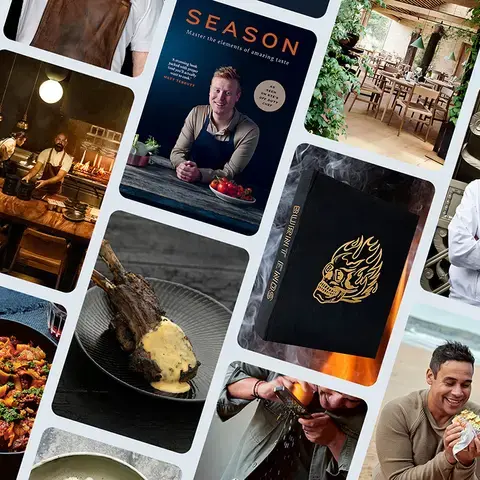Choosing the most sustainable fish to buy and eat is a daunting task these days. Farmed fished? Wild-caught or stock-managed? There is much conflicting information out there about what we can eat and why, and yet, with our oceans and fish stocks under more pressure than ever it is crucial that we make the right choices when shopping for seafood. As always, it is better to buy from a specialist fishmonger who can tell you exactly where the fish on sale comes from and whether it is a sustainable choice or not. Here are the 10 most sustainable fish types.

Photos: iStock
The 10 most sustainable types of fish to buy and eat

Creative commons
Alaskan salmon, particularly sockeye and coho varieties, generally come from well-managed, wild fisheries. The Alaska Department of Fish and Game employs strict regulations to maintain healthy fish populations, ensuring a sustainable harvest without jeopardising the ecosystem. Farmed Norwegian and Scottish salmon score low on the sustainability scale, while farmed Irish and Alaskan are more sustainable choices and taste better too.
Arctic char (farmed)

Like salmon in terms of flavour and fat content, farmed Arctic char is a good choice due to its low environmental impact. It is generally raised in closed containment systems, which produce minimal pollution, while controlled conditions prevent escapes that could harm native wild populations. Look for certifications from organisations like the Aquaculture Stewardship Council (ASC).
Mackerel (wild-caught)

Mackerel, especially Atlantic and Pacific varieties, are prolific and resilient, making them a sustainable choice for conscientious consumers. Harvesting methods such as purse seining and trolling reduce bycatch, ensuring minimal impact on non-target species. Mackerel is one of the most delicious fish types you can buy and cheap and good for you too with plenty of omega-3 fatty acids.
Sardines (wild-caught)

Sardines are a small, fast-growing species with low risk of overfishing. They often come from well-managed fisheries and provide a rich source of omega-3 fatty acids. Choose sardines caught using purse seine methods, which have minimal impact on the ocean floor. It is important when buying sardines that you look for certification you can trust, so a little research will make all the difference.
Barramundi (farmed)

Barramundi, often referred to as Asian sea bass, is an environmentally sound choice if it is sourced from certified aquaculture organisations. These farms use closed-loop systems, reducing the risk of disease transfer and pollution while maintaining optimal water quality. Barramundi is a resilient fish species that does well in environmentally controlled systems. The volume of wild-caught fish required for fishmeal for barramundi farming is equal to the volume of fish produced in the farms, which means the farming processes don’t take out more from the oceans than is produced. The barramundi you buy should come from recognised sustainable producers and from regulated markets.
Rainbow trout (farmed)

Rainbow trout can be a sustainable choice if it is farmed under the right conditions with strict standards. It can be a better choice than other trout species that can be endangered or under threat. Choose products certified by organisations like the Best Aquaculture Practices (BAP) to ensure responsible farming practices. In general, rainbow trout farmed in Europe and the UK are the most sustainable so choose those origins when possible.
Pacific halibut (wild-caught)
Pacific halibut is generally a well-managed species, with catch limits and quotas in place to prevent overfishing. Also, these flatfish are caught using longline methods that have minimal impact on the seafloor. However, a challenge to stock management is that the female halibut doesn’t reach sexual maturity until 10 years of age, this means great care must be taken when it comes to fishing. This makes it an expensive fish, but worth it.
Tilapia (farmed)

A very popular fish in the US, farmed tilapia is well regulated and considered one of the best choices for sustainability there. Look for farms adhering to environmental best practices, such as efficient water use and waste management. Certification from organisations like the Global Aquaculture Alliance (GAA) can validate sustainable farming practices. The farming of tilapia is considered to protect local native populations of wild tilapia, so the stocks are not depleted.
Black cod (wild-caught)
Cod is one of those fish that seems to confuse the consumer. We hear conflicting information about the health of cod fish stocks from time to time. Black cod, also known as sablefish, is often sourced sustainably, especially from Alaskan and Canadian fisheries. These fisheries are managed to maintain healthy populations, and the use of longlines and pots reduces the impact on the ocean floor.
Catfish (farmed)

Catfish from responsible US farms can be an eco-friendly choice. Farms adhering to Best Management Practices (BMPs) and recognised certifications prioritise water quality, waste management, and responsible use of resources. Catfish ponds can be very self-contained, which minimises pollution and cross contamination, and are usually filled with groundwater. In general, catfish is a hardy species so the use of antibiotics is low.













